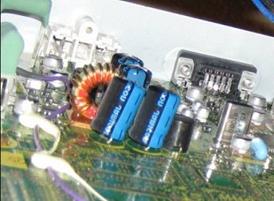One of the criteria for the normal operation of electronic devices is stable power. Changing the voltage in the supply network can critically affect the operation of a household or other device. Semiconductor elements provide additional opportunities for developers of various devices. Unfortunately, they are sensitive to operating conditions and require careful treatment. One of the devices that can protect the electronics from damage due to voltage drops or a high level of impulse noise in the supply network is a surge protector. It copes with its task perfectly and extends the life of the devices.

Let us mentally imagine the supply voltage and consider how different types of consumers affect its parameters. And how does the surge protector save the electronic device from damage? Ideally, the supply voltage is a sinusoid. It is constant in its current (amplitude) value and frequency. Unfortunately, when you turn on powerful consumers of electricity, various kinds of interference occur, which can damage sensitive devices.
In everyday life, such “noisy” electrical appliances include vacuum cleaners, refrigerators or air conditioners. That is, where asynchronous or other types of motors work, distortions will necessarily occur in the supply network. This is due to sparking on the brushes or for some other reason. Even the operation of an ordinary electric shaver can disrupt the operation of, for example, radio receivers. In other words, under the condition of working with an inductive load and with a short-term break in the electric circuit (as in the case of brushes in an electric motor), noise gets into the mains supply. They are short-term pulses of increased voltage. The surge protector, in fact, was created to deal with such anomalies.

But the problem is not only in electric motors. Another type of highly “noisy” devices includes modern electronic devices themselves: televisions, tape recorders, computers, etc. It turns out that the surge protector is able to protect electronics from damage, which itself creates unfavorable conditions for its operation. The fact is that modern devices incorporate switching power supplies, the operation of which is associated with a frequency of 1000 or more Hertz. Since there are transformers with a certain inductance at the input of such devices, interference occurs.
They are easy to see with an oscilloscope. You can assemble a small surge protector with your own hands to make sure its effectiveness. To do this, it is enough to create an inductance that will prevent the passage of high-frequency interference into the mains. To do this, simply wind a certain number of turns of wire, for example, PEV marks on a
ferrite ring and solder it sequentially into the power circuit for your computer. With an increase in inductance (number of turns), you can see on the oscilloscope that the noise gradually disappears.
Currently, there are a large number of surge protectors that are specifically designed to work with various types of loads. A good example in this case is the Pilot surge protector, which has excellent performance.